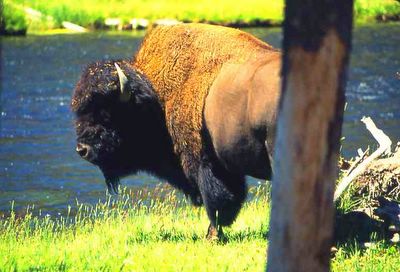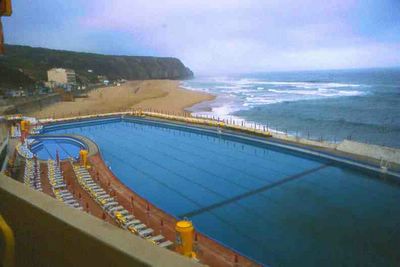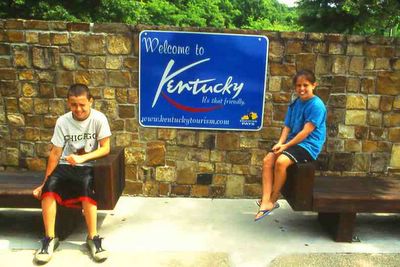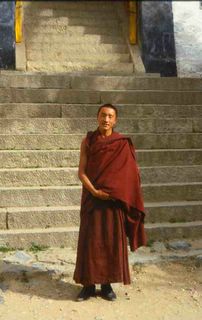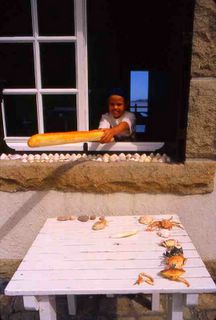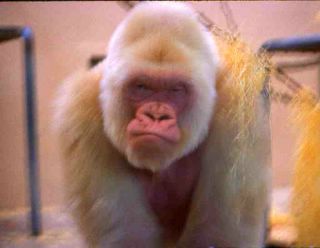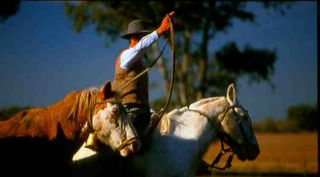 Tomorrow I head to New York to get ready for Sunday’s MORE Marathon. My left knee has been making itself known in the last few weeks, so I’ll take it slow and hope for the best. I may be running on Gatorade and Tylenol.
Tomorrow I head to New York to get ready for Sunday’s MORE Marathon. My left knee has been making itself known in the last few weeks, so I’ll take it slow and hope for the best. I may be running on Gatorade and Tylenol.
I hesitated before signing up for this race because it’s a loop course, not most runners’ favorite. Marathon courses come in four flavors: point-to-point (start somewhere and run 26.2 miles to somewhere else); out-and-back (run 13.1 miles to a turnaround point then run the same 13.1 back to the start, the direction change providing new scenery); single loop (move in a relative circle for 26.2 miles until you hit the place you started); multiple loops (anywhere from a few to a whole bunch of circuits over the same terrain until you’ve accumulated 26.2 miles). Because one’s mental state is a big factor in marathoning success (or bonking, runspeak for failure), and because passing the same stuff over and over and over again can make you, well, loopy, runners don’t generally go looking for multiple loop courses.
But this is no ordinary loop course. This is five and a half loops through the greatest public space in the world, Central Park. It’s also roughly the New York City Marathon’s original route before its founder, Fred Lebow, convinced the city to let the New York Road Runners Club (NYRRC) run its race through all five boroughs.
There should be plenty to relieve the mental exhaustion of seeing the same things five times (six for the stuff in the park’s southern tier). First, this is New York. It changes every nanosecond. I’ve been exploring New York for years, and I have scores of slides each of the same bridges, park benches, churches, water towers, gardens, plazas, statues, green spaces, street corners, hot dog vendors, intersections, rivers, tenements, museums, courtyards, apartment buildings, skylines, neighborhoods, train stations, theatre marquees, skyscrapers, wrought iron fire escapes, departments stores, flower stands, hotels, avenues, alleys, college campuses. No two photos of a place are the same.
And the changing pageant of park visitors should keep my mind from turning to jelly, too. Early joggers and cyclists; powerwalkers, dogwalkers and catwalkers (trust me. I captured it on film); chic, thin women pushing strollers; families eating ice cream and playing ball; kids hooting in playgrounds; birdwatchers and nature-lovers; tourists visiting for the first or the fiftieth time; horse carriages toting some of them about; rollerbladers; couples young and old; soda vendors and pretzel sellers; boat rowers and football throwers. The scene is sure to be peopled over the four-plus hours of my journey with enough human variety to keep my brain from shutting down.
And finally, there are the sights. There are enough great things to look at in and on the periphery of Central Park to keep anyone busy for years. Surely, they can occupy me for a few hours. I will look at the collection of wonderful natural and manmade attractions that my eyes will take in during my circumnavigation (and circumnavigation and circumnavigation and…) of this Olmsted and Vaux masterpiece as a visual feast. Fuel, like the PowerGels I’ll be inhaling.
Some of the sights I’ll digest as I travel the park include:*** The gleaming new twin towers of the AOL Time Warner Center at Columbus Circle
*** The Dakota, San Remo, Beresford, Majestic and the rest of the Central Park West line-up of ornate, gargantuan apartment buildings. Running between the first truly stellar one and the last will take me 60 city blocks. The twin-towered Art Deco beauties are my favorites, and when I hit the spectacular Eldorado at W. 91st Street, it’s only eleven more city blocks to the 102nd Street Transect where I'll cross the park to begin the southern piece of the loop
*** The Tavern on the Green. I’ll wave to the topiary in the courtyard and remember the night we ate in the Crystal Room (thanks to blog reader, Monica, whose brother works at the restaurant and pulled some strings to get us a last minute prime table for four). New York likes to have its marathons finish at the Tavern on the Green, and this one does
*** The 22-acre Sheep Meadow, now a sunny, green space for lounging and Frisbee-throwing, but once home to the park’s resident flock who were led twice a day to the Sheepfold, where sits today’s Tavern on the Green
*** The American Museum of Natural History, where I will focus my gaze on the original 1869 Romanesque core and try to ignore the uninspired, sprawling additions tacked on later
*** Quaint Swedish Cottage, built in 1876 (by Swedes), headquarters of the park's 50-plus-year-old puppet and marionette company. I won’t have time to see a performance, but if you’re ever in the neighborhood, check out the schedule and bring the kids
*** The dirt ballfields of the Great Lawn, which hosted a half-million strong audience for Simon and Garfunkle’s 1981 Concert in Central Park
*** The Reservoir, the path around which is a favorite city running venue. Dustin Hoffman ran around it in the 1976 film, Marathon Man, before his painful encounter with Laurence Olivier’s mad Nazi dentist, Szell. The NYRRC maintains a kiosk near the Reservoir at Runner’s Gate on the east side, where I’ll wave to the statue of Fred Lebow (again and again and again...)
*** Sixteen-acre North Meadow and its newly-restored playing fields and recreation center
*** Frank Lloyd Wright’s Guggenheim, sitting like a wonderful, whimsical white snail smack on Fifth Avenue
*** The backside of the Metropolitan Museum of Art and Cleopatra’s Needle, a granite obelisk from ancient Egypt. To me, it will be an exclamation point that says, “Keep going! One foot in front of the other! You can do it!”
*** The Loeb Boathouse, where, perhaps not on the first, second or third loops, but certainly by the fourth if the weather is fine, I will see people rowing happily around The Lake No, I'm not afraid of this loop course. With so much to look at, my mind should be fine. My knee on the other hand...
www.LoriHein.com
